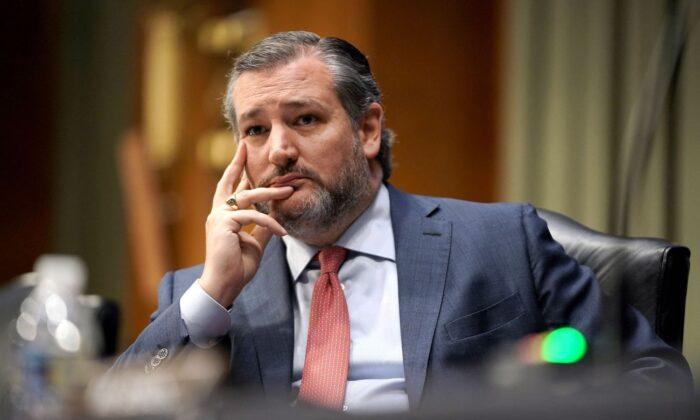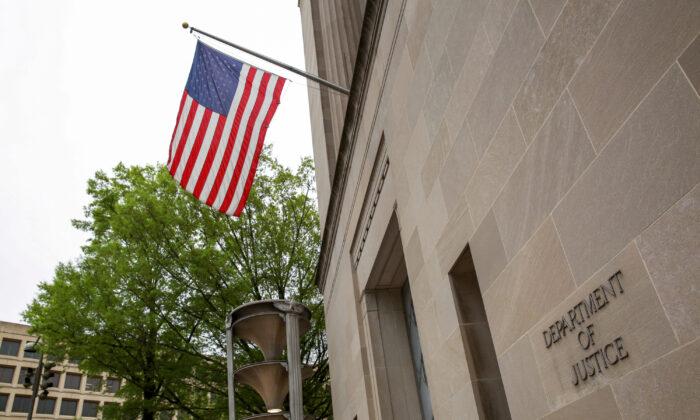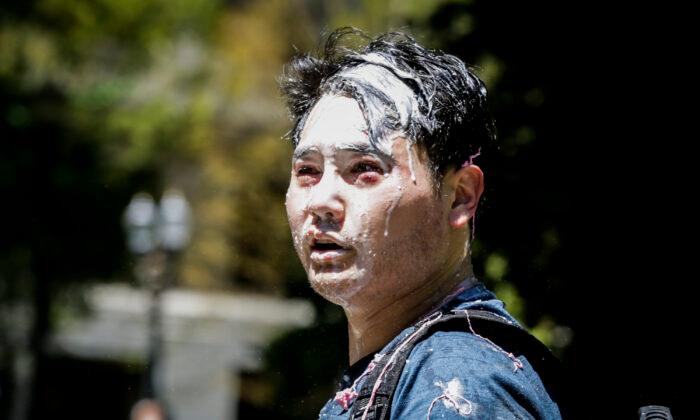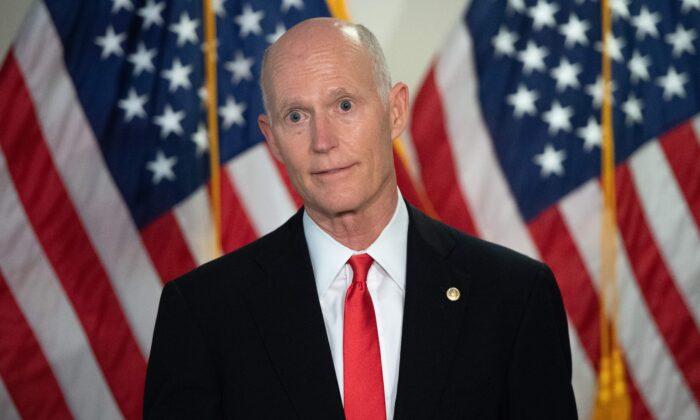Last month, Minneapolis City Council approved a proposal to change the city charter that would allow the police department to be dismantled. Meanwhile, New York officials announced that $1 billion of the city’s police budget had been shifted away from the department.
What was once seen as a radical idea, is materializing across the country as the “defund the police” movement, and it is gaining ground.
This response to Floyd’s death, coupled with escalating anti-police sentiments, rioting across the country, and a push to reform policing practices, has taken a toll on the morale of law enforcement men and women, who are facing greater pressure in recent weeks in their already highly demanding jobs.
“Their morale is maybe the worst ever right now,” said Joseph Imperatrice, the founder of Blue Lives Matter NYC, an organization working to support police officers and their families. “Officers have no sense in what direction to go. Their training is thrown out the window right now. ... They’re trained properly and how to subdue individuals [but] they’re holding back now because they don’t want to be on the front page of the paper and be arrested and lose their job for doing what they were taught to do.”
Imperatrice, who is an active police sergeant, told The Epoch Times that he is seeing an increasing number of New York police officers retiring, saying that many of these officers feel demoralized in the face of the violence perpetrated by rioters and extremist groups and the lack of support from superiors.
“It’s a really hard time to be a police officer,” he said. “And on top of that, with the budget cuts, especially the billion dollars in New York, you’re not going to have a backfill of officers coming in.”
“The NYPD has seen a surge in the number of officers filing for retirement. While the decision to retire is a personal one and can be attributed to a range of factors, it is a troubling trend that we are closely monitoring,” the department said.
Dwindling police department numbers could impact public safety as it could increase response time, Imperatrice said, adding that this would eventually lead people to feel that nobody is there to help them. He added that the uptick in crime that the Big Apple has seen in recent weeks would likely continue an upward trajectory if this is not addressed.
Imperatrice said that people will begin to ask, “where are the cops?”
The Numbers
Rob O'Donnell, a former New York City police detective and board member of Brothers Before Others, told The Epoch Times that he thinks police officers are being targeted for an incident that was not representative of how policing is conducted.“Police are feeling attacked at all angles for what truly are isolated very infrequent incidents,” O'Donnell said.
O'Donnell said while there is room for improvement in policing and with improving police-community relations, the conversation must not start from a place of false narratives. He added that politicians should also look at what the failure is at its core.
“Is it the policy’s themselves or the application of policies?” he said. “In the George Floyd case I believe it to be the application of the policy, and when someone misapplies a policy be it via negligence or criminal intent, then we have avenues to deal with that, which is exactly what’s being followed here. The officer was arrested, he will be indicted and tried, and will face a jury of his peers who will judge him criminally.”
Meanwhile, the issue of systemic racism toward the black American community in law enforcement is at the center of calls for reform. The Post’s database also shows that there were about 2,400 white Americans who were fatally shot by police since Jan. 1, 2015, which was almost twice the number of black Americans who were shot at 1,300 in the same time period.
However, since black Americans account for 13 percent of the population, the rate of black Americans who were shot and killed by police is twice the rate of white Americans. This is the source of the claim of systemic racism.
“What predicts officer use of force is the rate at which officers encounter violent and resisting suspects. And the rate at which officers killed blacks is actually far less than what their crime rates would predict,” Mac Donald said.
O'Donnell said, “Based on feeling from a statistically isolated incident we are making radical changes that are handicapping police who in 99.9 percent of the occurrences applied policies correctly, which will in turn lead to increased crimes, and more emboldened criminals.”
Attorney General William Barr acknowledged earlier this month that he believes black American males are often treated differently by U.S. law enforcement such as “treated with extra suspicion and maybe not given the benefit of the doubt.”
Floyd’s death, he says, demonstrates that the country still has work to do in regards to correcting years of distrust between the black American community and law enforcement.
Community Support
Melissa Robey, the founder of We Back Blue, a pro-police community group, has been holding marches around the country to show her support for law enforcement. Coming from a law enforcement family—a sister is an active officer, her father is a retired District of Columbia police officer, and her grandfather was a state trooper—Robey said she was saddened by the rioting she saw in Washington following Floyd’s death.“What I saw were people breaking into buildings and smashing windows and I saw police cars blocking the streets for them to do this,” she told The Epoch Times. “The police officers were standing there with their arms in front of them not really reacting. And I could tell, because I know a lot of people in law enforcement, that it was like really killing them.”
Robey said after the death of David Dorn, the 77-year-old retired police captain who was fatally shot during looting in St. Louis, Missouri, she decided she needed to do something about it. She then gathered a few friends and marched up 7th Street in Washington to the police memorial on June 13. After that first march, people quickly got wind of the movement and it began to grow.
Police officers are also responding to her marches, Robey said. One state trooper came up to her while she was pumping gas and asked her whether she was the “We Back Blue” woman. She said the trooper then asked her whether he could give her a hug. The trooper said he was overwhelmed by the support he saw from the community during one of her rallies in Manassas, Virginia. He said he had expected 10 people to show up but instead 400 people did.
“He goes: ‘You have no idea what that did for our morale.’ So increasing their morale in the job, and increasing community awareness of what these officers are actually doing, and what they’re going through is going to effect change,” she said.
Robey said her message for people is that there are “really, really good police officers out there.”
“[There are officers] that love their community, that are doing the job to protect their community,” she said. “They’re not becoming millionaires because they put on a gun and a badge. They’re out there because they love their communities and they love people and they want to help.”




